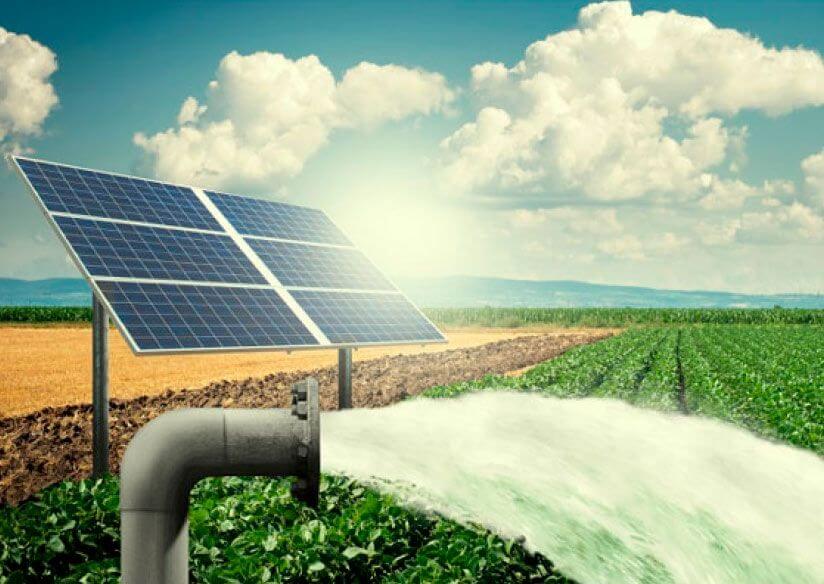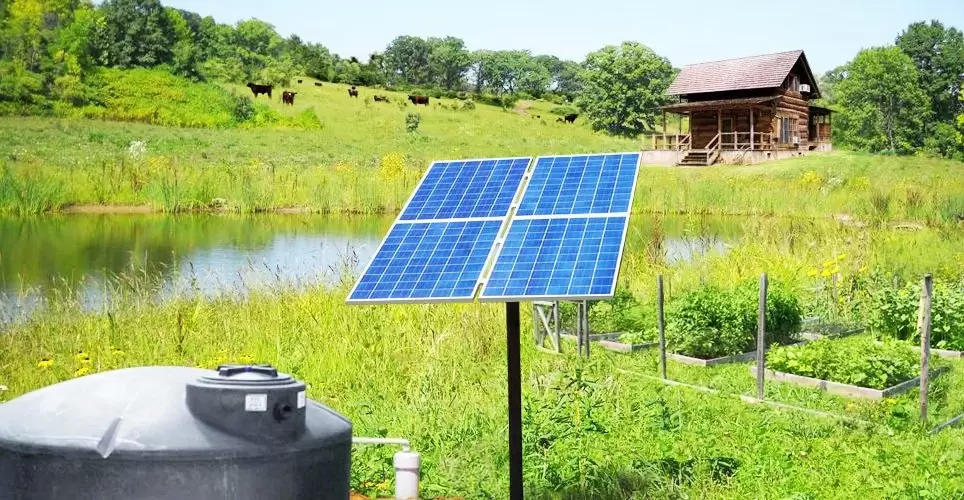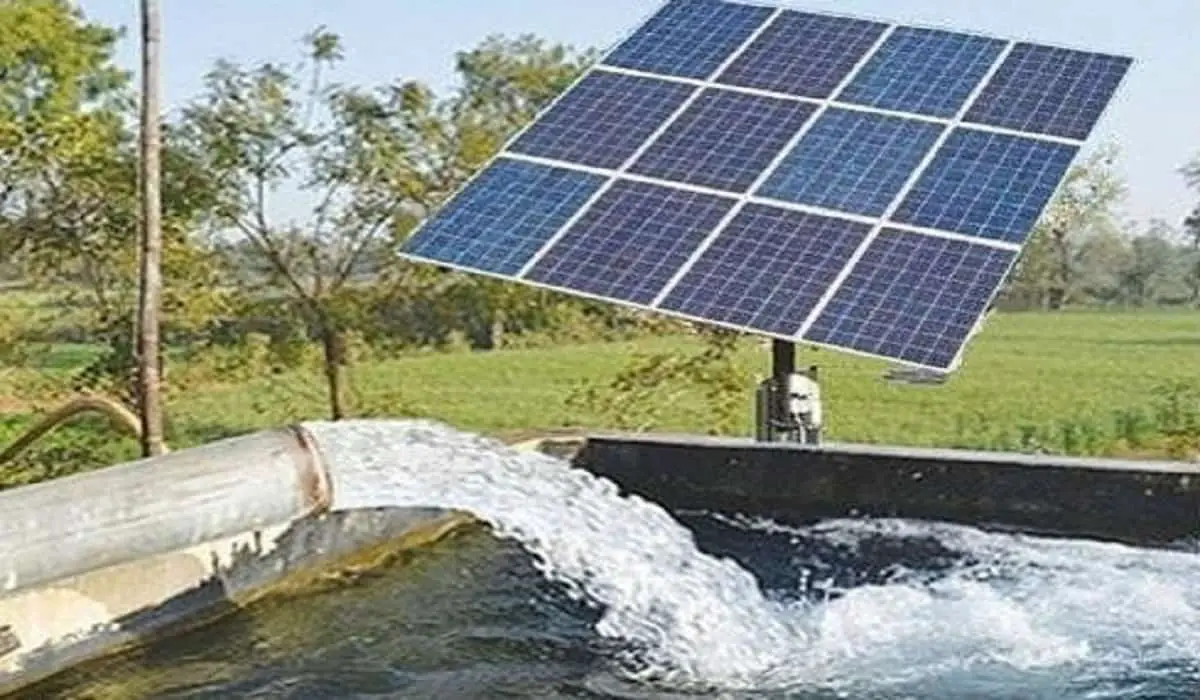A Solar Powered Water Pumping System can be used to make electricity, which can be used to power things like pumps and other home appliances. Solar electricity, in particular, is a reliable and inexpensive way to power water pumps in remote areas. Solar-powered water pumps can be used for many things, such as garden fountains, systems for watering animals, and systems for watering plants in factories.
What options do people in developing countries have when they need water for irrigation but can’t move it because they don’t have enough electricity? You can’t just flip a switch to turn off the power. Solar power, which uses the sun’s rays to make energy, could be a game-changer.
Simply put, it is essential to have access to clean water for many reasons. The World Bank says that agriculture uses more than 70% of all fresh water in most parts of the world. This number goes up to 80 and 90 percent of all water use in developing countries.
Solar Powered Water Pumping System Design Considerations
A Solar Powered Water Pumping system comprises a collection of solar panels, a controller, a pump, and a storage tank. (From the study “The Montana Agsolar Project: Increasing the Role of Solar Energy in Montana Agriculture”)
A solar-powered water pumping system needs four main parts: the pump, the controller that controls the speed and output power of the pump based on how much power is coming in from the solar panels, the engine, and the solar panels. The specific layout of the system is affected by the following things:
- Sun resources that are only available in one place (or insolation).
- How much water must be used for a particular task at a specific time? This could mean storing more water when the PV isn’t working or isn’t making as much electricity.
- The pump’s total dynamic head (TDH) is how much water it can move (the equivalent height that water must be raised, taking friction losses in the pipes into account.)
- How much water is available and how good it is.
- The plan for the system and its water requirements.
Pumps are driven by solar energy.
Direct current (DC) and alternating current (AC) are the two most common types of solar pumps (AC). DC solar pumps are a low-cost solution for low-volume applications because they don’t need inverters to change the DC energy from solar panels to AC power (garden fountains, landscaping, etc.). These pumps often have low flow rates because they are made to use as little power as possible. These pumps are often used in submerged deep wells, where their steady, low-volume output is acceptable.
Inverters use the AC energy made by PV panels to power AC solar pumps. They can be used for many things, from landscaping to irrigation, but they are best at big jobs, like watering large areas of land or bringing order to dry areas. AC solar pumps with power outputs that range from 150W to 55kW.
Solar pumps are usually centrifugal or positive displacement (such as the diaphragm, piston, or helical rotor). Positive displacement pumps are often used when the TDH is high but the flow rate (in gallons per minute) needed is low. On the other hand, centrifugal pumps are often used when the TDH and the flow rate are both low.
Solar water pumps can be used in many different situations, and there is a lot of information on how to do so. When making software, these materials should be used as guides.
Pump dimensioning
If the water supply or harvest depends on a steady flow of water, the size of the pump and its controls must be right. The size of the Solar-Powered Water Pump depends on where it will be used and how much water it is expected to move.
What parts does a Solar Powered Water Pumping System need to be set up?
A submersible or surface pump, solar panels, and tubing are the last parts of a solar water pump system. Batteries are rarely needed in water pump systems powered by the sun.
How to Choose a Solar Powered Water Pumping System
It’s important to know that not all water pumps are the same. Usually, the level of the water will determine which pump is used. Water can be pumped from a stream, a well, or a pond using different pumps. There are two different kinds of water pumps:
- Submersible water pumps can get water from as deep as 700 feet down in the ground.
- To pump surface water, the water depth must be between 10 and 20 feet.
Solar panels to choose
To ensure you’re getting the right things, you must look at the daily water needs. If you know how much water you need each day, you can choose the right water pump and figure out how much electricity your solar panels will need to make. The pump manufacturer can tell you how many watts are needed to get the water flow you want. When you know the size and type of solar pump, you can figure out the wattage of the solar panels. Putting solar panels on trackers may make pumps work better and last longer. Solar trackers could lead to a 30% increase in productivity. Here is a summary of everything you need to know about putting in a solar water pump: When it comes to this,
When should you use a battery?
Batteries are not needed for a water pump. Most solar water pumps can get their power directly from the solar array, so they don’t need to be connected to the grid. Instead of using batteries to store energy for running the water pump, water could be kept in a tank or pond. Using this method, water can be saved for later use.
How far can water pumps be powered by the sun?
For solar-powered water pumps to work, the photons from the sun’s rays have to be turned into energy. Solar panels use photons (units of light) from the sun to make direct current (DC), which powers the motor that pulls water from its source. An inverter could change the current if alternating current works better for the pump motor than direct current.
A system for a solar-powered water pump has the following parts:
Solar panels
Solar photovoltaic (PV) systems, which are what solar panels are also called, use photons from the sun to make electricity in three steps.
Photons from the sun are taken in by solar cells in solar panels and turned into direct current.
A device that changes direct current (DC) to alternating current (AC) is called an inverter (AC).
For the water pump to work, it needs this electricity.
The motor of a water pump
If you need water for cleaning, irrigating, or any other purpose, the water pump motor can get it from the ground, a river, or any nearby source.
Inverter
The inverter changes the power supply’s direct current (DC) into alternating current (AC), which water pumps need.
Pipes
From where the water comes from, it will be piped to a treatment plant, a storage reservoir, or wherever else it needs to go.
A place to store water
A water tank is a standard part of a water pumping system. It stores water to be used later, even when the sun isn’t shining.
Pump regulating devices
The water pump is run and controlled by a set of controllers. Protecting the water pump from electrical fluctuations or damage to the motor while it works after it has been drained could make it last longer. Controls can also be used to improve the water supply.
Now that you know how solar-powered pumps work, let’s discuss why you might want to use one.
Solar-powered water pumps are helpful in many ways.
People in developing countries need easy access to solar-powered water pumps, so they must rely on rain and hard-to-reach water sources. This water source is hard to predict, so it may only be possible to harvest it twice a year at most.
Many people have no choice but to use dirty, dangerous forms of energy that are bad for the environment and people’s health. Farmers must use time-consuming manual tools like ropes and buckets or expensive motorized tools that run on fuel or gasoline to water their crops.
About three billion people around the world heat their homes with wood. Charcoal made from fuelwood is used to power their water pumps. Fuelwood is a problem because there needs to be more of it, and women and children, who usually collect wood, have to walk farther to get it.
Solar water pump systems can be used for many different things. It lets people control how much water they use for drinking, watering animals, and watering plants around the house. When it’s hot and sunny, people often want water the most. In the same way, the PV panels make the most electricity around these times, and the most water goes into the storage tank around these times, too. Solar-powered water pump systems are reliable and easy to take care of because they are simple.
Costs to run a business are low.
PV (photovoltaic) panels are much cheaper to buy now than they were a few years ago because their prices have decreased. Because the energy comes from the sun instead of gasoline, the maintenance costs are much lower than other systems. Installing a solar-powered water pump is cheaper in the long run because it saves money on fuel.
Eco-friendly
Sunlight can be used to make energy that is clean and lasts for a long time. Renewable energy comes from natural sources that can be used repeatedly. Others think that too much CO2 is put into the air when solar panels are made for solar energy to be a good choice.
Even if this is true, making solar energy doesn’t add any more harmful emissions. So, solar-powered water pumps are safe to use because they don’t put out any harmful chemicals.
Particularly useful in distant areas
A solar-powered water pump doesn’t need to be connected to the power grid or any other energy source because it gets its power directly from the sun.
It’s easy to keep up.
There are few moving parts in solar-powered water pumps, so they don’t need to be fixed as often. They are made to last for decades without needing to be fixed.
Easy to set up and use
You don’t have to be an engineer to build and install a solar water pump. They only need a few parts and are easy for people in the area to assemble.
Getting more work done in less time
In developing countries, getting water may be a challenging job. Either way, you might have to walk for a long time. Solar-powered water pumps could improve health and productivity by making it unnecessary to get water by hand.
Farmers may be more productive if they don’t have to depend on things like rain and electricity.
Reliable
Solar water pumps are reliable because they don’t need to be connected to the power grid to work.
Water Accessibility for All
By 2050, there will be 9.9 billion people on Earth, which is two billion more than there are now. At this rate, we will have to rely more on energy sources that don’t use up resources and will only run out for a while if we want everyone to always have access to water and food.
The World Bank says that better agricultural practices could reduce poverty and ensure the world’s poor have food security. This makes solar-powered water pumps a critical tool. Ultrafiltration and reverse osmosis are ways Healing Waters filters water for their many water projects.



